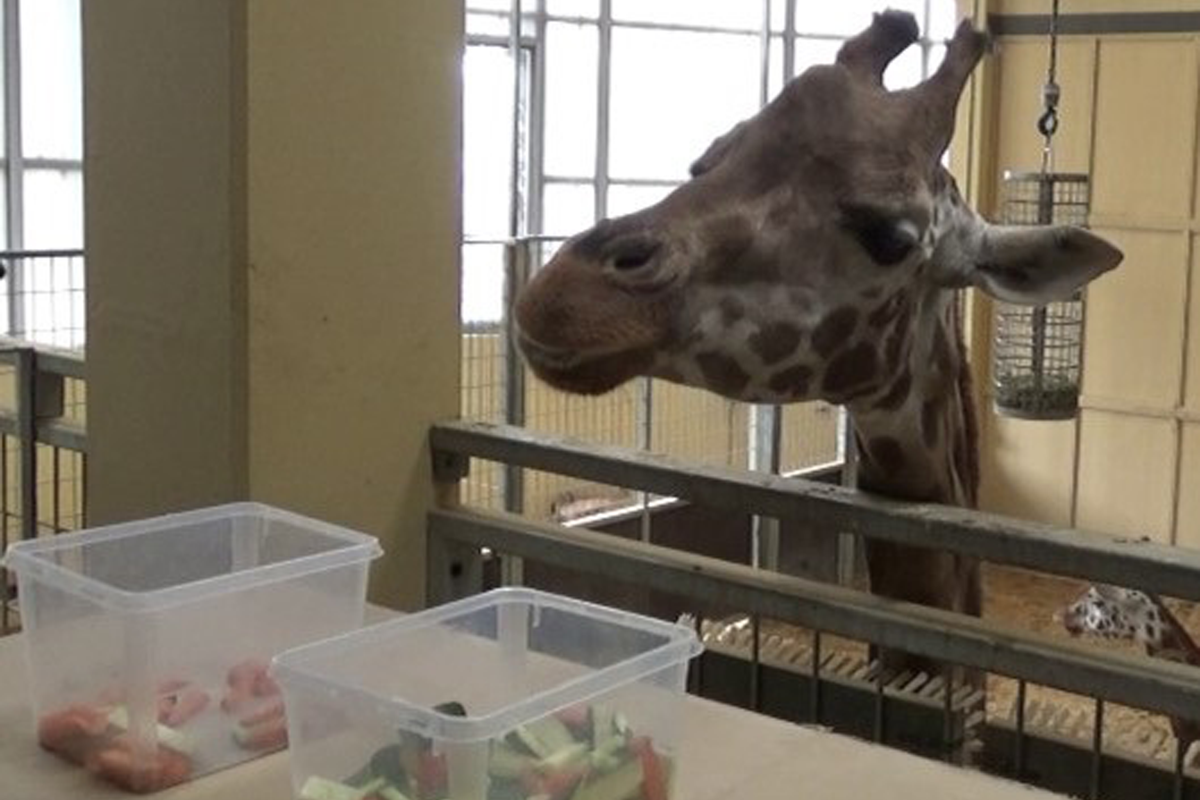Giraffes can make predictions based on statistics, scientists suggest

Giraffes have the ability to make predictions based on basic statistical calculations – just like humans, a study by scientists suggests.
A small study of four giraffes at the Barcelona Zoo in Spain has shown that these hoofed mammals (ungulates) can calculate the odds of getting their preferred treat from a handler.
The researchers said the findings, published in the journal Scientific Reports, suggest that despite having a relatively small brain size for a mammal, giraffes may have more sophisticated statistical abilities than previously thought.
First author Alvaro L Caicoya, a PhD student at the University of Barcelona, said: “The results of the study suggest that large relative brain sizes are not a necessary prerequisite for the evolution of complex statistical skills.
Our findings indicate that giraffes have the ability to make decisions based on the proportion of food in each container, in order to maximise their intake of the preferred food
Alvaro L Caicoya, University of Barcelona PhD student
“Statistical abilities might provide crucial fitness benefits to individuals when making inferences in a situation of uncertainty, and it should not be surprising if these abilities are widespread across animal taxa.
“For example, the savannah environment in which giraffes live is characterised by widely spaced trees.
“Therefore, being able to identify from a distance which trees have the best proportions of leaves and flowers that the giraffes want to consume likely provides an evolutionary advantage.
“This ability allows giraffes to conserve energy by avoiding unnecessary travel to less desirable food sources, and instead focus their efforts on reaching the trees that provide the most beneficial nutrients.”
The ability to make predictions based on statistics is considered a highly developed reasoning skill and has only been seen in large-brained animals such as primates, and keas, species of large parrot found in New Zealand.
For the study, Mr Caicoya and colleagues presented four giraffes – two male and two female – with two transparent containers filled with vegetable sticks.
Each box had a different mix of carrot and courgette sticks, with carrots being the preferred option.
Initially, an experimenter covertly drew a stick from each container using closed fists, and let the giraffe choose between the two options.
The researchers then upped the ante by inserting a physical barrier in both containers, so the giraffes could only take into account the upper part of the container when making their decision.
In 17 out of 20 experiments, the giraffes were able to select the container that was more likely to produce their favoured carrot sticks.
This was based on the relative frequencies of food in the containers, and not on other information such as their sense of smell, the researchers said.
Mr Caicoya said: “Our findings indicate that giraffes have the ability to make decisions based on the proportion of food in each container, in order to maximise their intake of the preferred food.
“This is, the giraffes were able to reliably select the closed fist more likely to provide the preferred food, even when the correct container did not contain a higher number of highly liked food and the wrong container did not contain a higher number of less preferred food.”
For all the latest Science News Click Here
For the latest news and updates, follow us on Google News.

